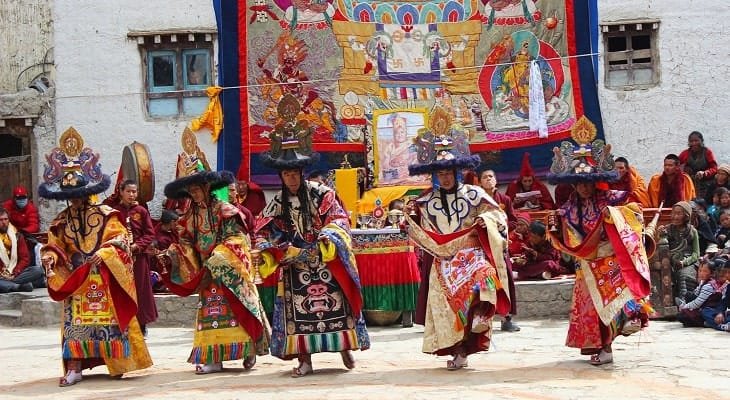The trek to the hidden Tsum valley is one of the most sought adventures in the western Nepal. Also known as the land of monasteries Tsum Valley has been blessed with the eternal Buddhist culture that mixes the Nepal and Tibetan culture making it one of a unique cultural trip ever. As we trek near the Tibetan border, Manaslu Tsum Valley Trek enables us to witness the Tibetan side of the mountains as well.
Manaslu Tsum valley Trek is perfect for those who want a long trek yet not hindered by the crowding of the trekkers. Since this is one of the uncharted lands in Nepal, it has not been exposed to others as another trek. Tsum is considered a different area from both Nepal and Tibet yet the culture flourishes from both spectrums.
This trek takes the people in and out the Budhi Gandaki and Marsyandi valley alongside the great Marsyangdi River. Trekkers will pass diverse landscape ranging from the flat terrace field to the rocky trail to the alpine and Rhododendron forests while enjoying the company of the welcoming villagers in the area. There are many monasteries and Gompas to follow while enjoying the view of the mystic peaks like the Annapurna mountain range, Mt. Manaslu (8,156m), Mt. Macchapuchhre (6,993m), Sringi Himal (7,422m) and many others.
Overview
Explore the beauty of the hidden Tsum valley in this trek to the western Himalayas near the Tibetan border. As you traverse across the diverse landscape and enjoy the view of the majestic mountains and the pristine waters, this journey will leave you something to worth tell about.
Located in the northern part of Manaslu, the Tsum valley amalgamates the Tibetan culture with our own and this Buddhist influenced region shows for some of the most dazzling representation of religion with the chortens, prayer flags, and monasteries among many others. Passing through the deep gorges and walking alongside the great rivers have never been so fascinating.
The natural scenery that one may experience in this trek is enormous. The giant snowcapped mountains can be seen from a distance at their full might. They serve as a great backdrop to the already existing green landscape. We also cross Larkya Pass (5,106m)- the highest point in the trek which enables the trekker to enjoy the panoramic view of the surrounding area. From the village of Namrung and Lho, we can view the sunrise reflecting upon these ice monstrosities.
Along with the natural richness, Manaslu Tsum Valley trek also provides the chance to interact with the local people and learn about their way of living, their lifestyle and their culture. The Tsum region has been inhabited by the Buddhist religion and follows the Buddhist way of life.
This is a 27 days’ trek to the north western Nepal. As the maximum height reaches more than 5,000 acclimatization plays a crucial role in the success of the journey. We reserve two of the days to get accustomed to the high altitude. The rocky landscape and steep ridges will test the limit of your stamina. In this moderately difficult trek, endurance and stamina are other aspects that you must have to take on this journey. Prior trekking experience is advised. If you are facing physical and medical conditions like high blood pressure, then we would request you to take the opinion of the doctor before taking on this trek.
As with most of the other treks in Nepal, the main season for Manaslu Tsum valley trek is in spring (March-May). The weather is clear and it is perfect to walk without any hindrance. The view of the mountains is excellent. The cloud may obstruct the view if we travel post-spring season which is marked by extreme rain. Another good time to visit would be the autumn (November – December). The weather is favorable in this season as well. Post autumn marks the beginning of weather which will surely be detrimental to your health, especially considering the fact that you are up in the mountains.
Volunteer’s Initiative Nepal is a social organization operating in Nepal. The major objective of VIN is to make sure that there is social equality in the county. The proceeds from the trek will be allocated to the marginalized communities who don’t have access to facilities like food, water, sanitation. This amount from the expense will be used to develop infrastructure and make their life better. There are many people in the rural people who are deprived of these facilities and VIN will channelize the fund towards them and make the facilities available to them. So, this trek not only associates with the journey through the uncharted land of Nepal but also act as a medium to help someone have a better life through your contribution.
Highlights
- Trek to the world-famous place in Nepal and world
- One of the most popular trekking destinations globally.
- Winters are extremely cold and harsh, making trekking challenging.
- Witness lush meadows, thick rhododendron forests, and vibrant valleys.
- Immerse yourself in natural beauty, culture, and unique traditions.







